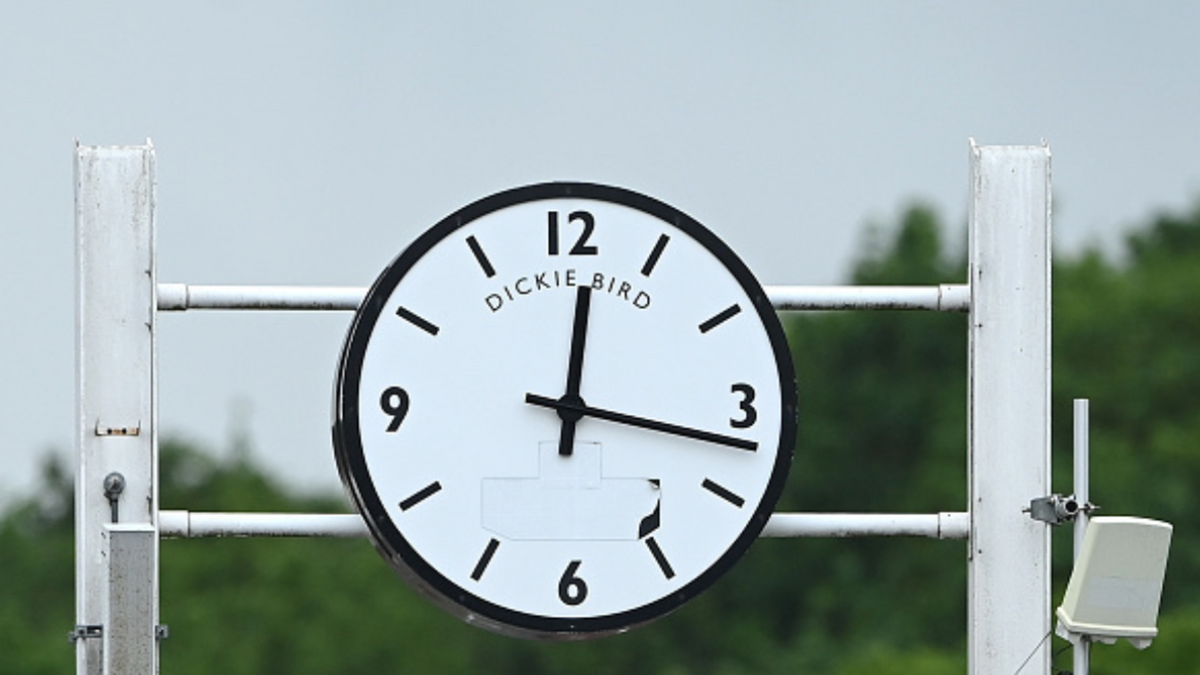
In a bid to speed up the game even further, the ICC will use a stop clock in international cricket for six months to reduce the time taken between overs by the bowling side to 60 seconds.
Subscribe to the Wisden Cricket YouTube channel for post-match analysis, player interviews, and much more.
The first West Indies-England T20I on December 12 will be the first instance when a stop clock will be trialled in international cricket after the ICC approved the move last month.
“The clock will be used to regulate the amount of time taken between overs,” the ICC said in a media release on Tuesday. “If the bowling team is not ready to bowl the next over within 60 seconds of the previous over being completed, a five-run penalty will be imposed the third time it happens in an innings.”
How will the stop clock work?
The tv umpire will be in charge of starting the stop clock after the end of every over with the countdown being displayed on the ground as well as on the big screen. The bowling side will need to bowl the first ball of the next over within a minute of sending down the last delivery of the previous over.
What happens if a bowling team does not bowl within a minute?
The bowling side will get two warnings about overshooting the stop clock, and they will be penalised five runs if they err a third time.
Are there any exceptions?
There are some specific exceptions in the rule. The third umpire will not count down seconds if a new batter walks out to the crease before the start of a new over. The rule will also not be enforced if any player on the ground gets injured and needs treatment.
Additionally, in case there is a delay due to circumstances beyond the control of the fielding side, such as when a ball gets lost or needs to be changed, or when equipment breaks, the rule will not be applied.
If the last ball of an over is declared dead or if a DRS is used, the third umpire will not activate the stop clock.
The stop clock will also not be used during a drinks break.
What happens if the batting team is not ready to face the next over within 60 seconds?
If a bowling side is ready to bowl within a minute and the delay is from the batting side, the discretion will be on the on-field umpires to come to a decision.
If a batter intentionally delays, the time allowance will be deducted from the batting team. If a batting side exceeds their allowance by three minutes and they are fielding second, the time will be deducted from their overall time in the second half.
It is, however, not mentioned what happens when a batting team intentionally delays in the second half when a bowler is ready to bowl within 60 seconds.
How long will the stop clock be trialled?
The new experiment will be used for approximately five months in all men’s ODIs and T20Is from December 2023 till April 2024. Around 59 matches will be played under this new trial phase for the time being.
Will there still be a fielder fewer outside the circle if a bowling team delays?
The ICC’s new playing conditions in 2022 where slow over rates forced fielding sides to have a fielder less outside the 30-yard circle in the final over of the game will still be applicable.








